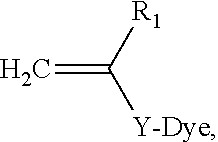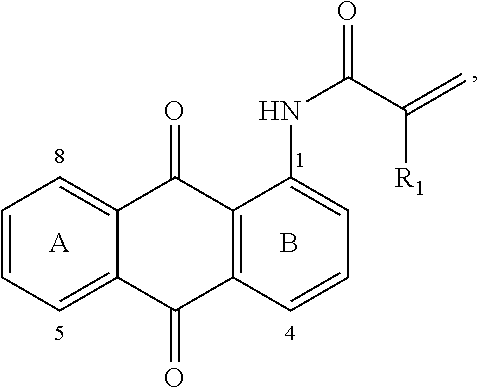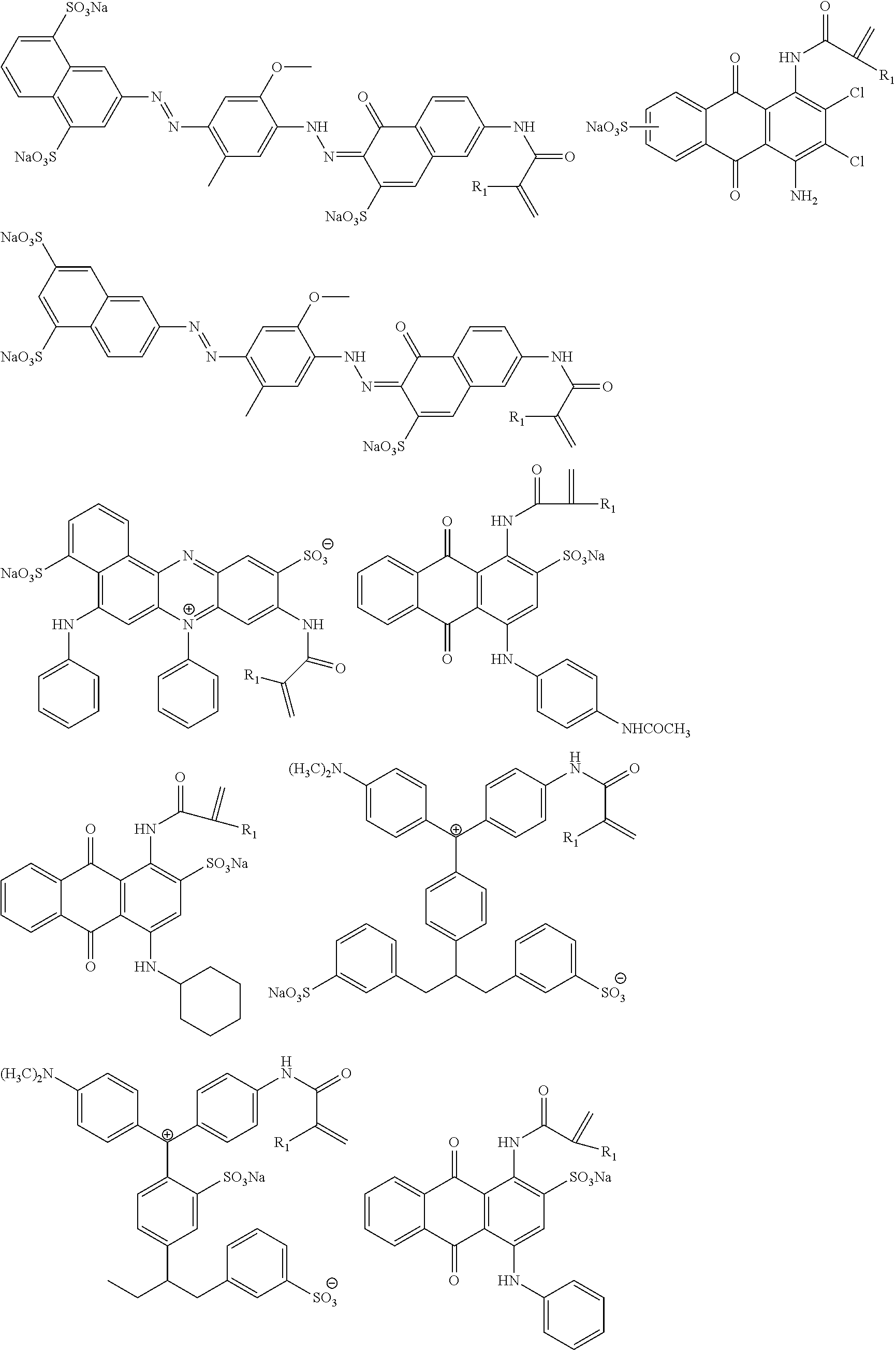Anionic dye polymers
a technology of anionic dye and polymer, which is applied in the direction of detergent dye, detergent compounding agent, anthracene dye, etc., can solve the problems of high dye level, high cost, and difficult to make such polymers with high dye level, and achieve high dye level, easy to make, and weight-effective effect of shading fabrics
- Summary
- Abstract
- Description
- Claims
- Application Information
AI Technical Summary
Benefits of technology
Problems solved by technology
Method used
Image
Examples
example 1
Polymer Synthesis
[0084]The dye monomer shown in the scheme below was prepared by the reaction of Acid Blue 25 (CI: 62055) and acryloyl chloride (2-propenoyl chloride) in the presence of sodium dicarbonate. Methacryloyl chloride (2-methylprop-2-enoyl chloride) also functions well to provide similar dye monomers.
[0085]Dye polymers were created via radical polymerisation of the dye monomer with dimethyl amino ethyl methacrylate (DMAEMA) according to the reaction scheme:
example 2
UV-VIS Spectroscopy
[0086]The UV-Vis spectra of the dye polymers of example 1 were recorded in demineralised water at 1 g / L dye polymer. The UV-V is spectra of the dye polymers of example 3 were recorded in demineralised water at 1 g / L dye polymer and containing 1 g / L of linear alkly benzene sulphonate surfactant (LAS). The results are given in the tables below and an identifying code given to each polymer.
code λmax in range 400- 700 nm Absorbance (1 cm) @ λmax for 1 g / L in 1 g / L LAS95 5P45510.769010P55341.37
example 3
Dye Deposition Experiment
[0087]Knitted white polyester (microfiber), knitted nylon-elastane (80:20) and white woven non-mercerised cotton fabrics were used together in 4 g / L of a detergent which contained 15% Linear Alkyl benzene sulfonate (LAS) surfactant, 30% Na2CO3, 40% NaCl, remainder minors included calcite and fluorescer and moisture. Washes were conducted in 6° French Hard water at room temperature with a liquor to cloth ratio of 30:1, for 30 minutes. This was then repeated once more to accomplish 2 washes in total. Following the washes the cloths were rinsed twice in water, dried, their reflectance spectrum measured on a reflectometer and the colour expressed as CIE L* a* b* values (UV-excluded).
[0088]The experiment was repeated with the addition of the dye polymers of example 2. The polymers were added to give 5 ppm in the wash solution. The deposition of the dye-polymers to the fabrics was expressed as the Δb value such that Δb=b(control)−b(dye polymer)+ve values indicate ...
PUM
| Property | Measurement | Unit |
|---|---|---|
| Fraction | aaaaa | aaaaa |
| Fraction | aaaaa | aaaaa |
| Density | aaaaa | aaaaa |
Abstract
Description
Claims
Application Information
 Login to View More
Login to View More - R&D
- Intellectual Property
- Life Sciences
- Materials
- Tech Scout
- Unparalleled Data Quality
- Higher Quality Content
- 60% Fewer Hallucinations
Browse by: Latest US Patents, China's latest patents, Technical Efficacy Thesaurus, Application Domain, Technology Topic, Popular Technical Reports.
© 2025 PatSnap. All rights reserved.Legal|Privacy policy|Modern Slavery Act Transparency Statement|Sitemap|About US| Contact US: help@patsnap.com



